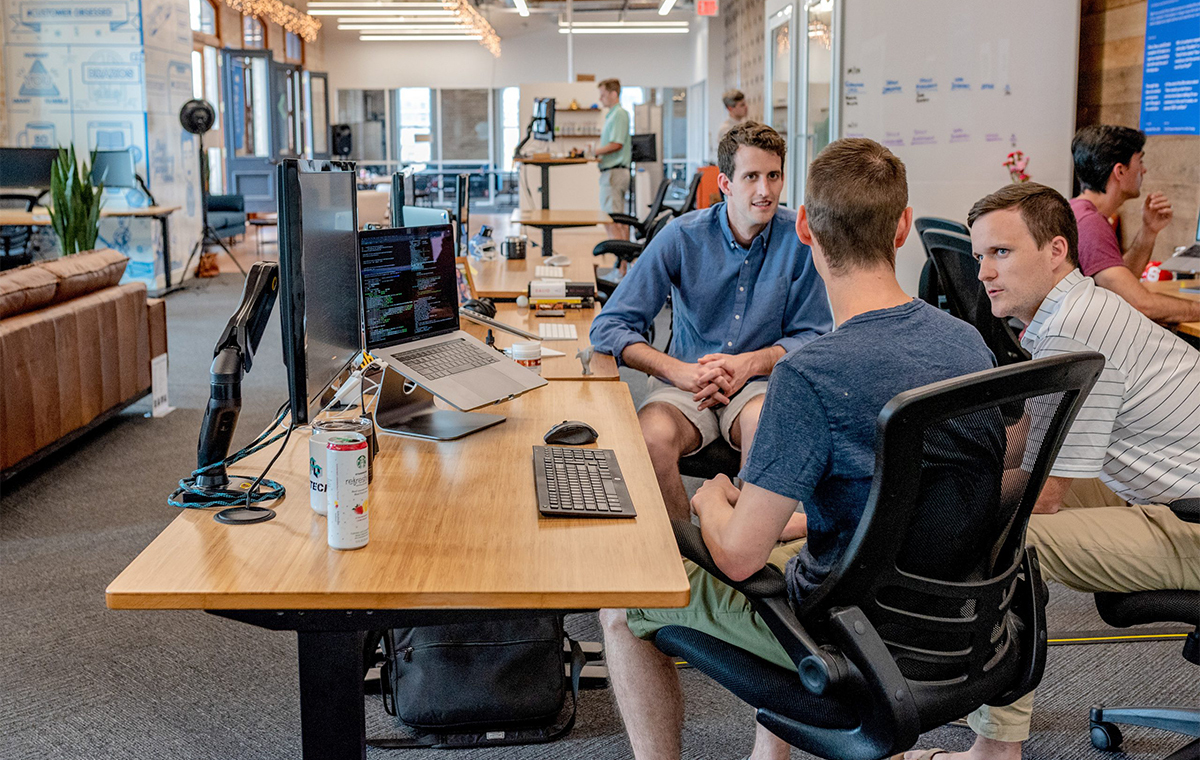Employee office usage patterns haven’t disappeared, but they have changed. What can they tell us?
In a recent “Mann Report” article, Thijs van der Burgt, HqO’s Managing Director of Global Corporate Solutions, wrote about the patterns and predictability of employee office usage. “Pre-pandemic, most [companies] could bank on at least 70% of their user base being in the office at any one time,” he explained. “Occupancy was largely predictable and reliable.”
In a post-pandemic world, it may seem as if business leaders have lost this predictability completely. However, the current evolution of the workplace suggests that instead of disappearing, predictability about office usage patterns has fundamentally changed.
Today, people see enormous value in the office as a place to collaborate and co-create, with office usage centered around company culture, socialization, and group work.
Emerging Patterns in the Modern Workplace
HqO’s findings – derived from analysis of nearly 2,000 of our users’ in-app behavior – show that people want physical, human-based interaction in the middle of the week, with more individual, non-office based work at the beginning and end of the week.
For example, in the time between Q1 2020 and Q2 2021, the overall number of employees using HqO to book meeting rooms decreased by 30%. Despite a decrease in meeting room bookings, the number of spaces booked per individual during the same period rose a dramatic 75%. This data suggests a unique repositioning of office usage.
In addition to overall workplace experience, the shape of the work week itself seems to be changing. Pre-pandemic Mondays were preferred for planning and large in-person meetings. The emergence of hybrid work has caused a shift, with Monday meeting bookings dropping by nearly 15% – indicating employees’ increasing use of Mondays as a day for remote work.
Tuesdays and Thursdays, meanwhile, are experiencing the opposite effect. Employees now prefer midweek – otherwise known as the “centerpiece of the working week” – for in-person meetings.
Leveraging New Patterns of Office Usage
Such new office usage patterns deliver organizations and business leaders a clear message: the predictability of workspace usage is still possible, but only with the tools in place to record changing employee behaviors.
Having the right digital tools will assist employers in the development of “real certainty” in regarding employees’ use of the office. More specifically, a robust workplace experience platform can offer capabilities to:
- Monitor how and when an office is being used
- Analyze this usage and identify emerging usage patterns
- Adapt to and benefit from patterns by making data-backed decisions that increase employee engagement and building efficiency
“Those who hope things simply return to pre-pandemic days will struggle,” Thijs wrote. “But those who are willing to monitor, analyze, and adapt will provide the post-pandemic workspaces today’s employees want and need.”
Curious how HqO can help you track office usage and improve your employee experience? Schedule a demo today.



